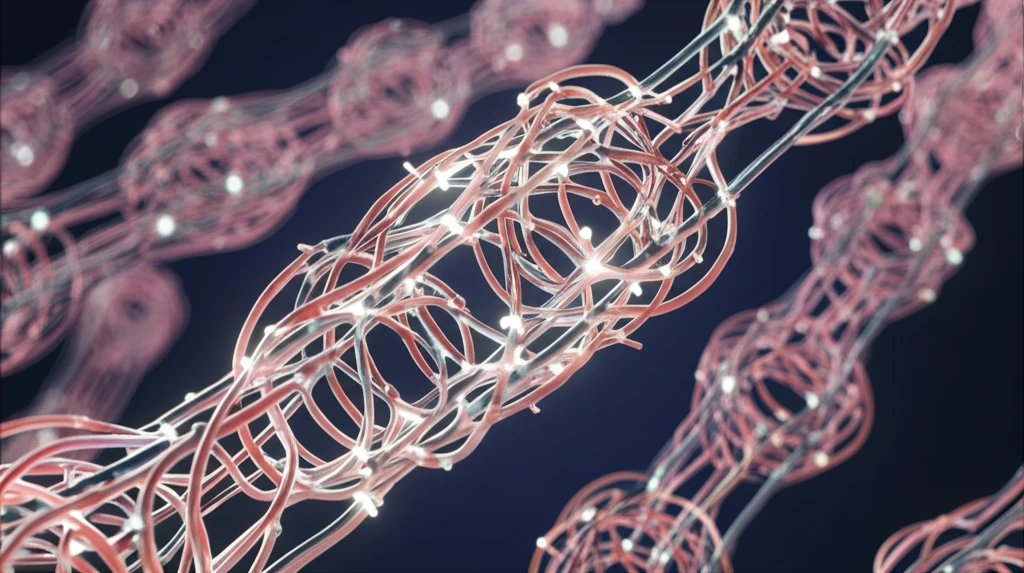
Unlocking Polymer Secrets: How Entanglement Research is Changing Materials Science
"Dive into the world of polymer entanglement and discover how cutting-edge research is paving the way for stronger, more durable materials in everything from your car tires to your favorite tech gadgets."
Imagine a world where the plastics in your car are incredibly resistant to wear and tear, or where the rubber in your shoes lasts significantly longer. This isn't science fiction; it's the potential outcome of groundbreaking research in polymer entanglement. Polymers, the large molecules that make up plastics, rubber, and many other materials, have properties heavily influenced by how their chains intertwine and interact.
For decades, scientists have been trying to fully understand and control these interactions. Think of it like trying to untangle a bowl of spaghetti – except the spaghetti strands are on a microscopic level and their arrangement dictates the strength, flexibility, and durability of the material. This article explores how recent advancements in identifying and manipulating polymer entanglements are revolutionizing material science.
From advanced computational models to innovative experimental techniques, researchers are now able to probe the innermost secrets of polymer behavior. This deeper understanding is not just an academic exercise; it's leading to the creation of new materials with enhanced properties, poised to transform industries ranging from automotive and aerospace to consumer electronics and healthcare.
What is Polymer Entanglement and Why Does It Matter?

Polymer entanglement refers to the way long chains of molecules intertwine and interact within a material. These interactions act as physical crosslinks, giving the material its structure and determining its mechanical properties. Imagine a fishing net; the more tangled and knotted the net, the stronger it becomes. Similarly, in polymers, a higher degree of entanglement generally leads to increased strength, toughness, and resistance to deformation.
- Strength and Durability: Entanglements act as reinforcement points, preventing polymer chains from easily sliding past each other under stress.
- Viscoelastic Behavior: Entanglement influences how a polymer responds to deformation, contributing to its ability to stretch, bend, and recover its shape.
- Processing Properties: Understanding entanglement helps optimize manufacturing processes, ensuring that polymers are processed in a way that maximizes their desired properties.
The Future of Polymer Science: A World of Entangled Possibilities
As research into polymer entanglement continues to advance, we can expect to see even more groundbreaking innovations in materials science. From self-healing polymers to ultra-strong composites, the ability to control and manipulate polymer interactions at the molecular level will pave the way for a new generation of materials with unprecedented properties and capabilities. This isn't just about making things stronger or more durable; it's about creating materials that are more sustainable, more efficient, and more aligned with the needs of a rapidly changing world.
